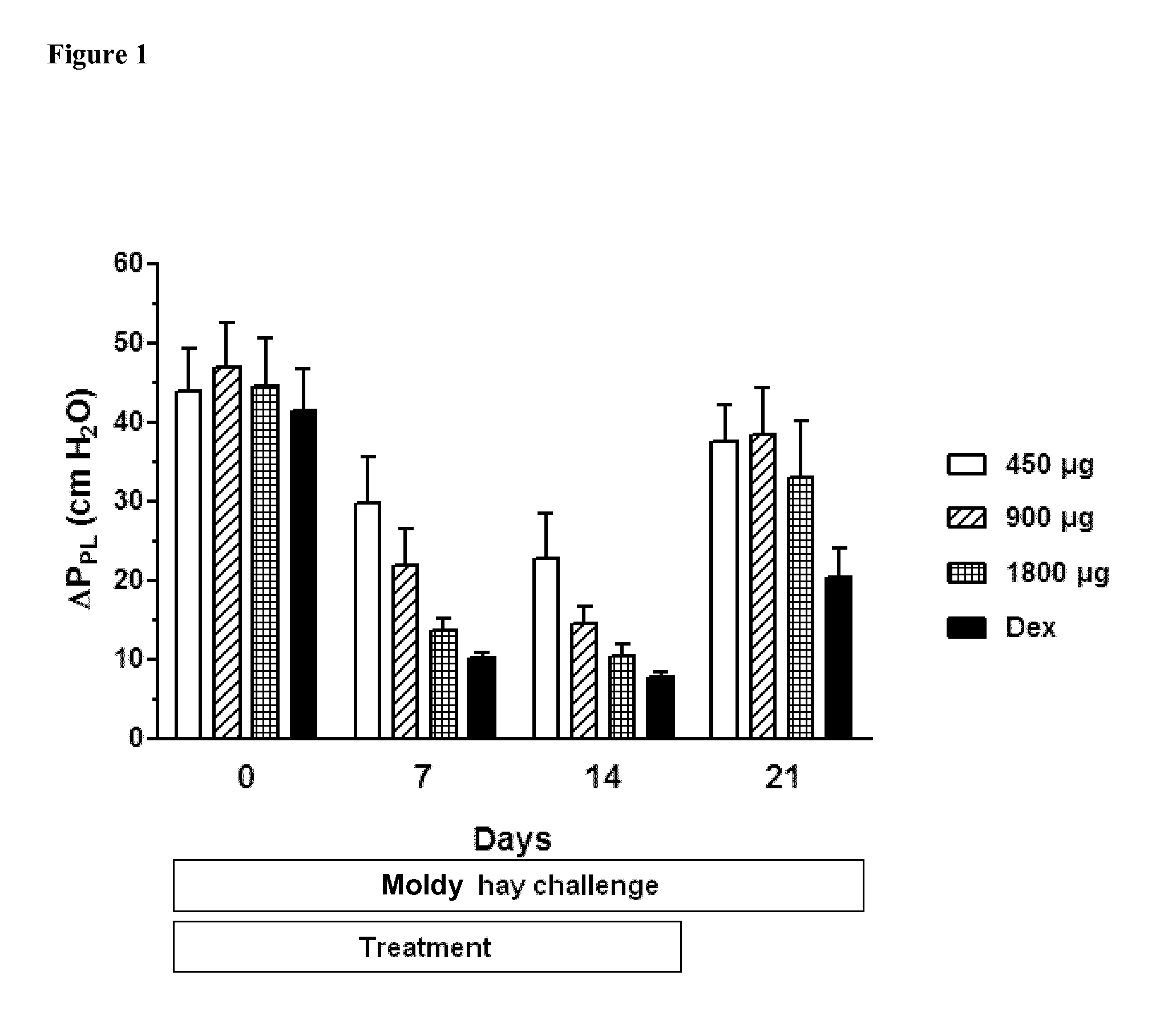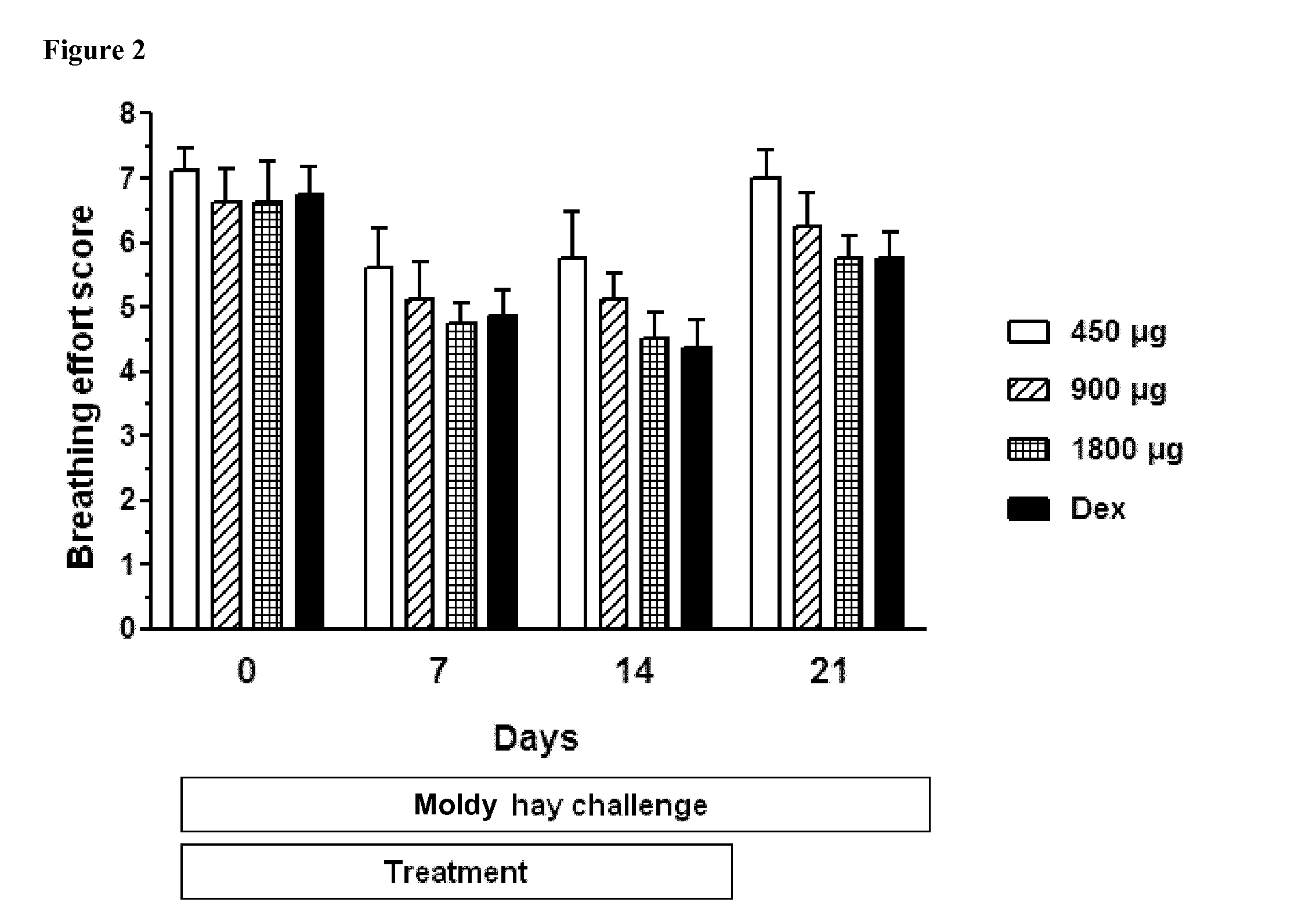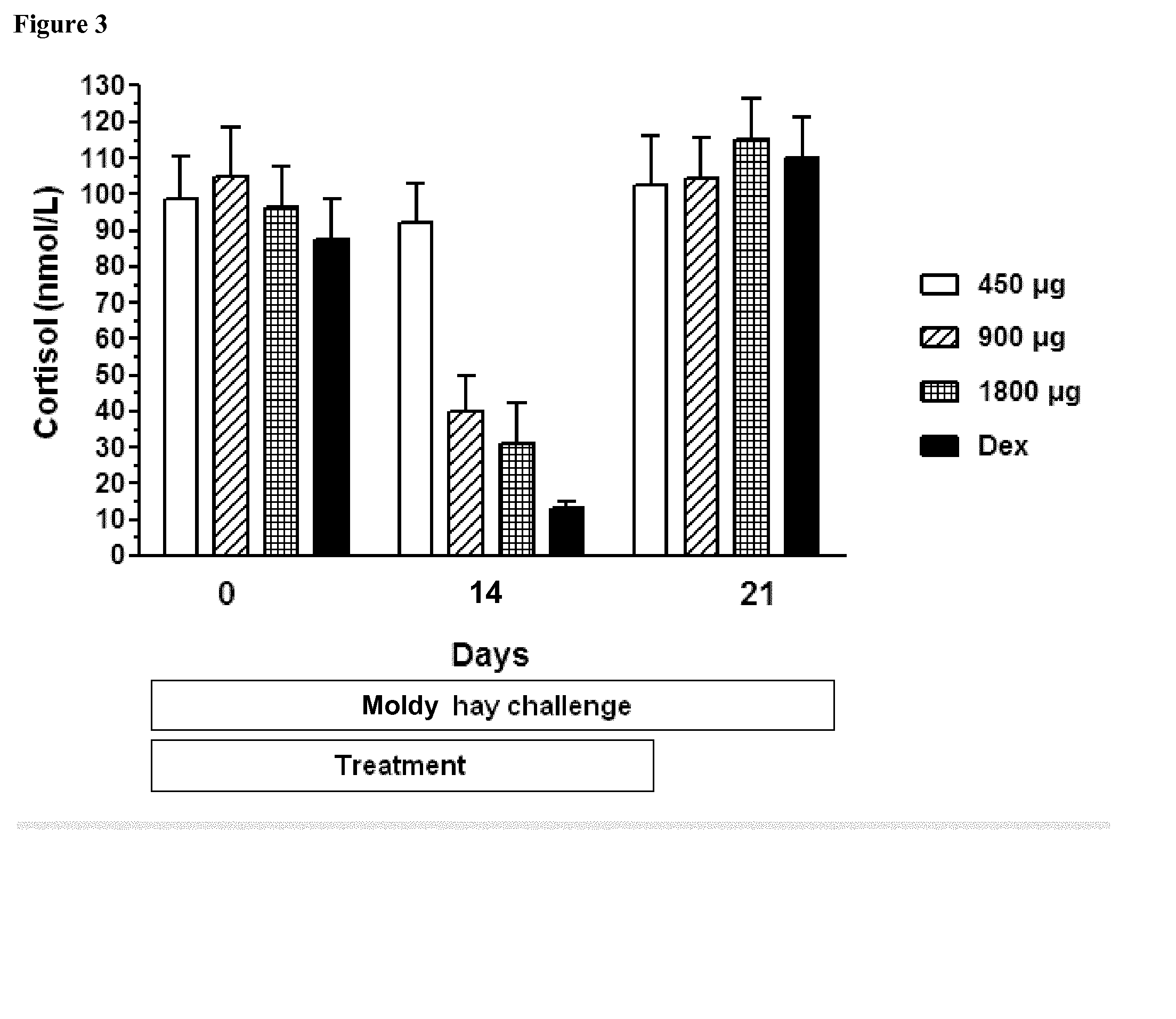Ciclesonide for the treatment of airway disease in horses
a technology of airway disease and ciclesonide, which is applied in the field of medicine, can solve the problems of state of the art treatment with dexamethasone not allowing constant high dose levels, etc., and achieves the effects of reducing the risk of infection, increasing susceptibility to infections, and convenient treatmen
- Summary
- Abstract
- Description
- Claims
- Application Information
AI Technical Summary
Benefits of technology
Problems solved by technology
Method used
Image
Examples
example 1
[0082]Budesonide is investigated in a cross-over, blinded moldy hay challenge study. 8 RAO horses are examined in the study, which is divided into an acclimation and a treatment phase. Placebo for budesonide is administered a few times per inhalation via the Equine Inhaler device to all horses in the acclimation period. Budesonide and dexamethasone is administered to the horses in a cross-over design in the treatment phase. The horses are challenged by exposure to moldy hay throughout the acclimation and treatment periods. Budesonide is administered with the doses of 450 μg (2 actuations) / 900 μg (4 actuations) / 1800 (8 actuations) μg / horse (ex-RESPIMAT®) twice daily for 14 days per inhalation via the Equine Inhaler device. Nozzle A and a RESPIMAT® not available commercially is used in the study. Nozzle A is the nozzle used with the commercially available RESPIMAT®. Dexamethasone is administered with a dose of 0.066 mg / kg per os, once daily for 14 days. Lung function variables (change...
example 2
1st Ciclesonide Study
[0084]Ciclesonide is investigated in a cross-over, blinded moldy hay challenge study. 8 RAO horses are examined in the study, which is divided into an acclimation and a treatment phase. Placebo for ciclesonide is administered twice daily per inhalation via the Equine Inhaler device to all horses for 1 week in the acclimation period. Ciclesonide and dexamethasone are administered to the horses in a cross-over design in the treatment phase. The horses are challenged by exposure to moldy hay throughout the acclimation and treatment periods. Ciclesonide is administered with the doses of 450 μg (2 actuations) / 900 μg (4 actuations) / 1800 μg (8 actuations) / horse (ex-RESPIMAT®) twice daily for 14 days per inhalation via the Equine Inhaler device. Nozzle A and a commercially available RESPIMAT® is used in the study. Dexamethasone is administered with a dose of 0.066 mg / kg per os, once daily for 14 days. Lung function variables (change in transpulmonary pressure (ΔPL), lun...
example 3
2nd Ciclesonide Study
[0087]Ciclesonide is investigated in a cross-over, blinded moldy hay challenge study. 8 RAO horses are examined in the study, which is divided into an acclimation and a treatment phase. Placebo for ciclesonide is administered twice daily per inhalation via the Equine Inhaler device to all horses for 1 week in the acclimation period. Ciclesonide and dexamethasone are administered to the horses in a cross-over design in the treatment phase. The horses are challenged by exposure to moldy hay throughout the acclimation and treatment periods. Ciclesonide is administered with the doses of 1687.5 μg (5 actuations, nozzle B) / 2700 μg (8 actuations, nozzle A) / 2700 μg (8 actuations, nozzle B) / horse (ex-RESPIMAT®) twice daily for 14 days per inhalation via the Equine Inhaler device. The commercially available RESPIMAT® is used in the study. Nozzle A is the nozzle used with the commercially available RESPIMAT® inhaler. Nozzle B is a different nozzle resulting in a reduced sp...
PUM
 Login to View More
Login to View More Abstract
Description
Claims
Application Information
 Login to View More
Login to View More - R&D
- Intellectual Property
- Life Sciences
- Materials
- Tech Scout
- Unparalleled Data Quality
- Higher Quality Content
- 60% Fewer Hallucinations
Browse by: Latest US Patents, China's latest patents, Technical Efficacy Thesaurus, Application Domain, Technology Topic, Popular Technical Reports.
© 2025 PatSnap. All rights reserved.Legal|Privacy policy|Modern Slavery Act Transparency Statement|Sitemap|About US| Contact US: help@patsnap.com



